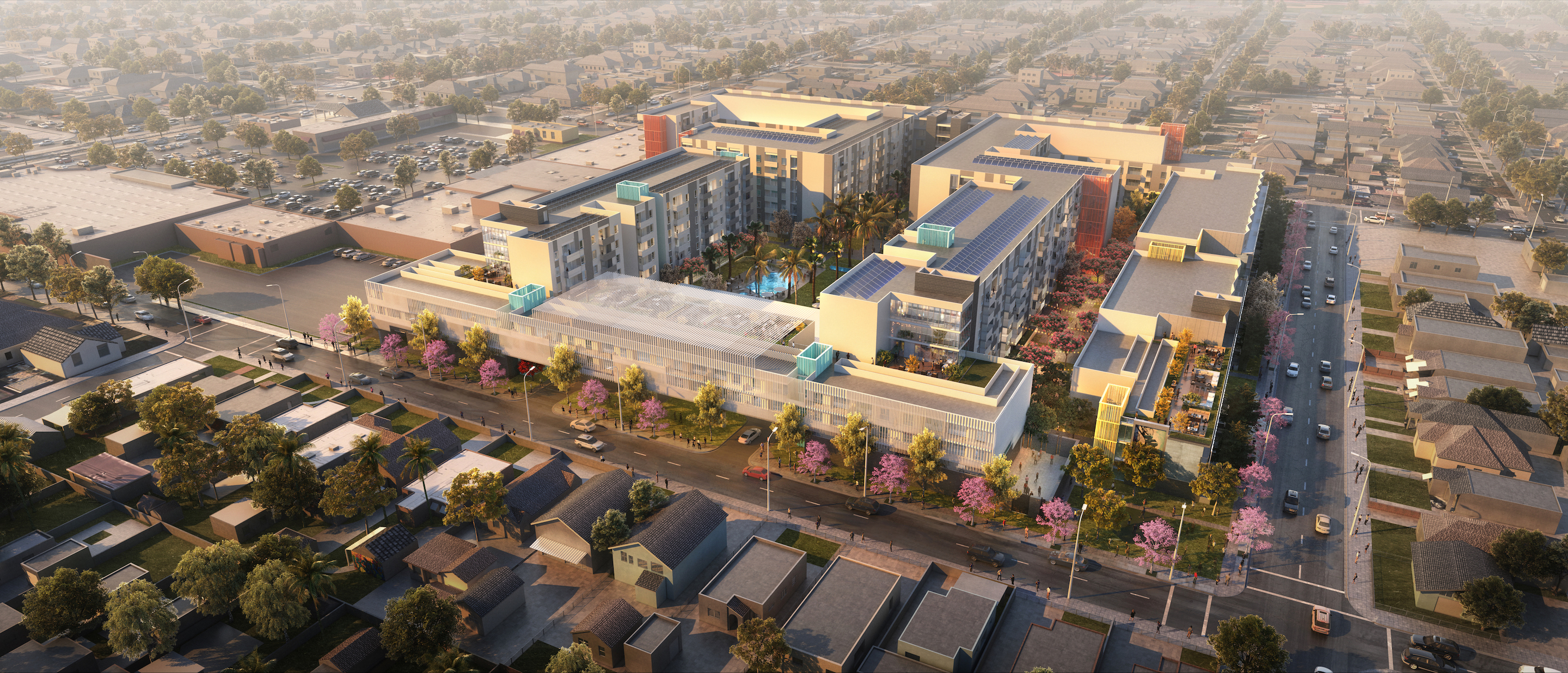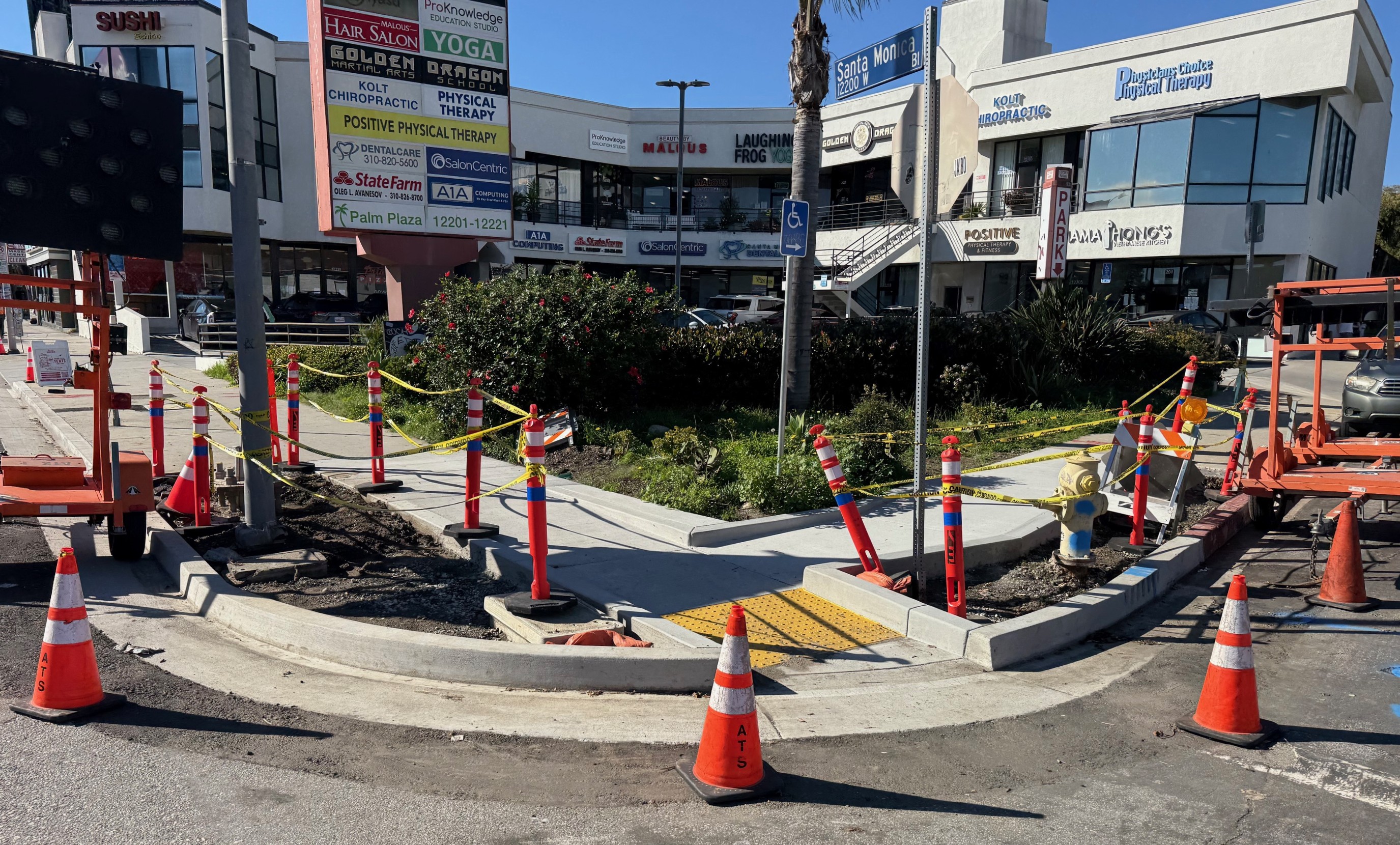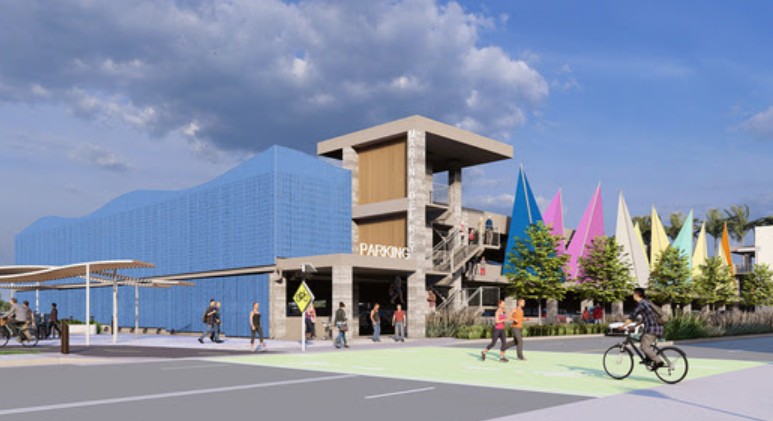Reading the Initial Study for the redevelopment of Dorset Village posted to city planning's website yesterday (and to Urbanize L.A today), I was once again struck by how little thought we ask developers or the agencies and elected officials that sign off on a project to give to its potential impact on the residents of historically disenfranchised communities.
As explained in the opening pages, the Initial Study is intended to help the city determine if the proposed project would have a significant impact on the environment, thereby requiring the developer to prepare an Environmental Impact Report (EIR).
And the study does just that, dutifully answering questions about whether the routes of migratory fish will be interrupted or whether scenic vistas will be disturbed. [Spoiler: both the fish and the vistas will be fine, though, as expected, the size of the project and the potential environmental impact means the developer will need to conduct a full EIR and engage in a public process in the coming months.]
The study also notes that the existing Village, located just east of Crenshaw on Slauson, is "an excellent example of a 1940s garden apartment" and is eligible to be in the National Register of Historic Places, the California Register of Historical Resources, and listed as a City of Los Angeles Historic-Cultural Monument. The study recommends the historic value of the village get further consideration in the EIR, so the cost of its (potential) loss could be fully understood. [Dorset Village has not yet been registered on any of those lists, but if it were, a historic designation might help protect it from demolition.]

As is always the case with environmental studies, however, there is little to no room for contemplation of the human ecosystem that will be disrupted.
It's something I've complained about before, most notably with regard to The Reef back in 2016. In that case, the lack of a mechanism by which the city could factor in the cumulative costs of disenfranchisement or the ability of existing residents to weather the changes the project was likely to spark made it easier for city planning staff to handily dismiss residents' concerns about indirect displacement.
Which was kind of insane, when considering it was a billion-dollar project that was on the table - one intending to put 1,444 residential units, a 208-room hotel, a gallery, other retail, and a plaza and performance space on the edge of Historic South Central (the most overcrowded neighborhood in the country at the time, as well as one of L.A.'s poorest).
And which seems even more insane now, looking at the plans for Dorset Village and the likelihood that nearly 200 families will find themselves directly and permanently displaced from the historic Crenshaw district.
As we reported earlier this year, billionaire developer Jeff Greene's plans for the project originally included the demolition and replacement of the existing 206 units with 782 apartments, several pools, a basketball court, a sand volleyball court, and a recreation center including a gym, a dance/yoga studio space, a locker room, and an outdoor deck.
Of those 782 units, 141 were originally to be categorized as affordable, including 87 Extremely Low-Income, 17 Very Low-Income, and 37 Low-Income units. That number has since been raised to 147 affordable units, with an additional four units included in the Very Low-Income category and two more added to the Low-Income category.
Given that the building is rent-controlled, however, that number still appears to fall short of the total affordable units needed for the project to avoid being subject to rent stabilization. The Rent Stabilization Ordinance requires that demolished rent-controlled units be replaced one-for-one, or that 20 percent of the new units be offered as affordable, whichever is greater.
One interesting tidbit gleaned from the Initial Study is that only 163 of the 206 units are currently occupied. It is unclear how long the remaining 43 have sat vacant or if Greene has been actively trying to get residents to leave more recently - something he did at Rolland Curtis Gardens in the hopes of turning that building into USC student housing.
What does appear clear is that now that the Crenshaw Line is about to open, the clock is ticking.
Demolition of the units is planned for June of 2021, and construction is slated to be completed in January of 2024.
*****
Update: The city is accepting public comment on Dorset Village through February 6 (the window for comment had originally closed on December 27). See our story about the update and the lack of a public process here. See the notices regarding the public comment process in English and Spanish. Send comments to Alan Como: Alan.Como@lacity.org or call (213) 847-3633.
To connect with me about Dorset Village, find me on twitter - @sahrasulaiman - or send me an email at sahra [at] streetsblog [dot] org. We will continue to provide updates about opportunities to provide input on the project as the environmental review process unfolds. For our previous coverage of the plans for Dorset Village see:
Many thanks to Steven Sharp of Urbanize L.A. for alerting me to the publication of the Initial Study








